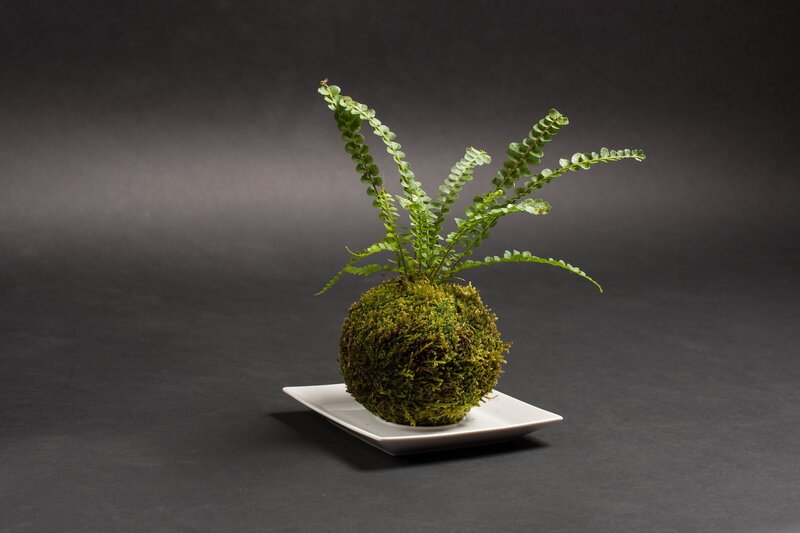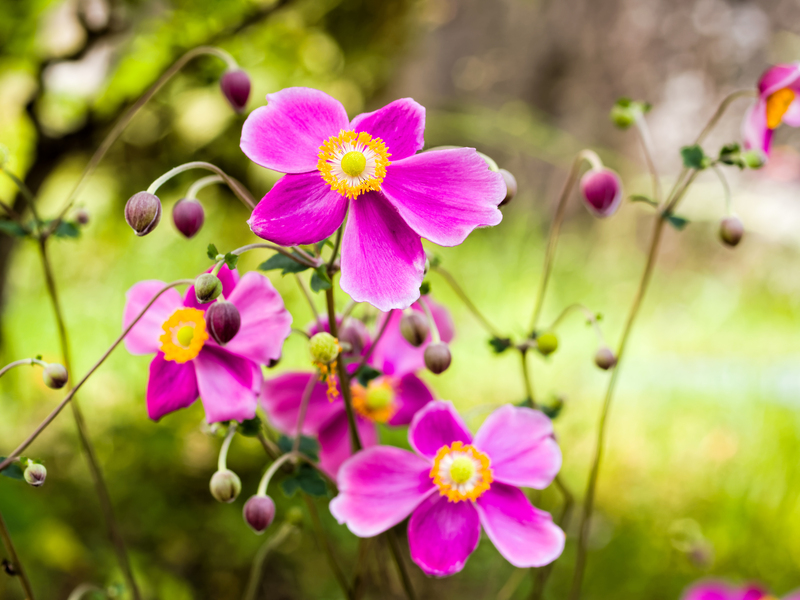Mastering the Art of Orchid Maintenance
Posted on 18/05/2025
Mastering the Art of Orchid Maintenance: An Essential Guide
Orchids, with their enchanting blooms and diverse varieties, stand as emblems of elegance in the world of floral beauty. For both novice and experienced gardeners, mastering orchid care means unlocking a blend of science and artistry. If you're intrigued by nurturing these exquisite plants, this comprehensive guide to orchid maintenance reveals everything you need to know for cultivating vibrant, healthy specimens at home.

Understanding Orchids: Fundamentals You Need to Know
Orchids belong to one of the largest plant families, Orchidaceae, boasting over 25,000 species distributed worldwide. These plants thrive in various climates, from tropical rainforests to temperate woodlands. Their remarkable adaptability, unique flower shapes, and captivating colors have made them favorites among plant enthusiasts.
Orchid Varieties for Beginners
- Phalaenopsis (Moth Orchid) - Popular for its gorgeous, long-lasting blooms.
- Cattleya - Noted for large, fragrant flowers.
- Dendrobium - Offers a variety of forms and easy adaptability.
- Oncidium (Dancing Lady Orchid) - Known for prolific flowering and striking patterns.
Tip: These species are renowned for adaptability and make ideal choices for first-time orchid gardeners.
Creating the Ideal Orchid Environment
The secret behind successful orchid maintenance starts with simulating their native environment. Orchids have evolved to grow as epiphytes (on trees) or lithophytes (on rocks), requiring air circulation, light, and unique moisture conditions.
Light: Balancing Exposure for Vibrant Flowers
- Most orchids thrive in indirect, filtered sunlight.
- Place orchids near an east-facing window or behind sheer curtains to provide bright, but not direct, rays.
- Watch for leaf color changes: Deep green leaves usually indicate insufficient light, while yellowish leaves can signal too much sun.
Some orchids, such as Cymbidiums, require more light, yet direct midday sun may burn their foliage. Always monitor your plant's response to light and adjust positioning as needed.
Temperature and Humidity: Mimic the Tropics
- Daytime temperatures ideal for orchids range from 65-80?F (18-27?C).
- Nighttime temperatures should dip only slightly for most species.
- Humidity is crucial--aim for 40-70%, typically higher than average home environments.
- Increase air moisture with pebble trays, humidifiers, or regular misting (avoid misting blooms directly).
- Ensure the orchid site has good airflow to ward off fungal issues.
Potting Media: What Do Orchids Really Need?
Unlike ordinary houseplants, orchids do not thrive in standard soil. Instead, they flourish in porous, free-draining media such as:
- Bark chips - Ideal for epiphytic orchids, allowing roots to breathe.
- Sphagnum moss - Retains moisture for species preferring more humidity.
- Leca beads (lightweight expanded clay aggregate) - Great for hydroponic and semi-hydroponic methods.
- Coconut husk chips - Long-lasting, organic alternative with good moisture retention.
Repot orchids every 1-3 years, once the medium starts to break down or roots outgrow the container.
Watering Wisdom: Tailoring the Routine
Correct watering remains the most challenging aspect of orchid maintenance. Both overwatering and underwatering can harm your plant. Here's how you can fine-tune your practice:
When and How to Water Orchids
- Most orchids require water every 7-14 days, but frequency varies by orchid type, climate, and time of year.
- Check moisture by feeling the potting media--if it's dry an inch below the surface, it's time to water.
- Use room temperature, distilled, or rainwater--avoid softened water with high salts.
- Water in the morning to ensure leaves and crown dry by evening, reducing risk of rot.
- Allow all excess water to fully drain out; never let the pot stand in stagnant water.
- During winter or cooler months, reduce watering frequency accordingly.
Remember: Orchids are more tolerant of drought than soggy roots. Prioritize drainage for healthy roots.
Feeding Orchids: Choosing the Right Fertilizer
For lush, sustained blooms, fertilizing orchids judiciously is essential.
Orchid Fertilizer Tips
- Use a balanced (20:20:20) water-soluble fertilizer formulated for orchids.
- Apply fertilizer every 2-4 weeks during the growing season (spring/summer); reduce in fall/winter.
- Dilute fertilizer to half or quarter strength to avoid root burn.
- Some gardeners remember this as "weakly, weekly" - small doses, regularly.
- Flush pots with plain water monthly to remove built-up salts and minerals.
Don't over-fertilize! Orchid roots are sensitive. More isn't always better.
Repotting Orchids: Refreshing Their Home
Routine repotting is vital for ongoing orchid care and robust growth.
- Repot every 1-3 years, or if you see roots escaping the pot, medium decomposition, or growth stagnation.
- Choose a pot just slightly bigger than the root system. Orchids prefer a tight fit.
- Trim dead/rotting roots, keeping only firm, healthy ones.
- Use fresh orchid bark or media suited to your orchid variety.
Repotting after flowering ensures minimal stress and encourages vigorous new growth cycles.
Pruning and Grooming: Keeping Orchids Tidy
Orchid maintenance involves more than just watering and fertilizing. Pruning improves ornamental value & plant health.
- Remove dead or yellowing leaves and spent flower spikes with sterilized scissors.
- For reblooming orchids (like Phalaenopsis), cut the spike just below the first "node" after flowering to encourage new blooms.
- Always use clean tools to prevent disease spread.
Regular tidying keeps orchids healthy and more likely to reward you with repeated blooms.
Common Problems and Solutions in Orchid Care
Despite their exotic beauty, orchids can be prone to pests and ailments, especially if growing conditions are less than ideal.
Recognizing and Treating Orchid Pests
- Aphids, scale, spider mites, and mealybugs are the most frequent pests.
- Wipe leaves and stems with a damp cloth or use insecticidal soap as needed.
- Isolate new or affected plants to limit the spread.
- Keep foliage dry and remove decaying organic matter to reduce pest attraction.
Preventing and Managing Orchid Diseases
- Root rot is a frequent issue--caused by overwatering and poor drainage.
- Bacterial or fungal leaf spots appear as discolored patches--remove affected areas and provide better ventilation.
- Always sanitize pots and tools between uses to prevent pathogen buildup.
Monitoring plants regularly is the strongest defense against long-term problems.
Seasonal Orchid Care: Adapting to Change
Knowing how to adjust orchid maintenance as seasons shift keeps your plants thriving all year round.
Spring and Summer Care
- Increase watering and humidity as active growth resumes.
- Feed regularly and repot, if needed, during this robust growth phase.
- Provide shade in peak sunlight hours to avoid leaf burn.
Autumn and Winter Care
- Reduce feeding and watering as growth slows and temperatures fall.
- Watch for temperature fluctuations near windows or heating vents.
- Maintain humidity with trays, as indoor heating can dry air significantly.
Some orchids, such as Dendrobiums, benefit from a cool, dry "rest" in winter to foster abundant spring blooms.
Encouraging Orchids to Bloom Again
With proper care, most orchids will bloom annually, while others can flower more frequently. To initiate reblooming:
- Provide sufficient light, moderate feeding, and a slight drop in nighttime temperatures to mimic natural triggers.
- Cut spent stems (as recommended per species) to focus energy on new spike production.
- Be patient! Some orchids need weeks or months of dormancy before producing new buds.
Persistence and attentive care are key to enjoying repeated orchid displays year after year.

Expert Tips for Mastering Orchid Maintenance
- Read individual care tags or guides for your orchid's species--every orchid is unique.
- Keep a simple calendar to note blooming, watering, feeding, and repotting schedules.
- Group orchids together to create a locally humid microclimate.
- Rotate orchids regularly to ensure even exposure to light.
- Join online orchid communities for ongoing advice and inspiration.
Conclusion: The Joy of Orchid Mastery
Although orchid maintenance may seem daunting at first, these captivating plants reward attentive caretakers with lasting beauty and satisfaction. By understanding the unique requirements of light, temperature, humidity, watering, feeding, and potting, you can ensure your orchids not only survive but flourish within your home.
Patience, observation, and a bit of practice will transform you from a beginner into a true orchid expert. So embrace the journey, celebrate each bloom, and relish the developing artistry of mastering the art of orchid maintenance!



